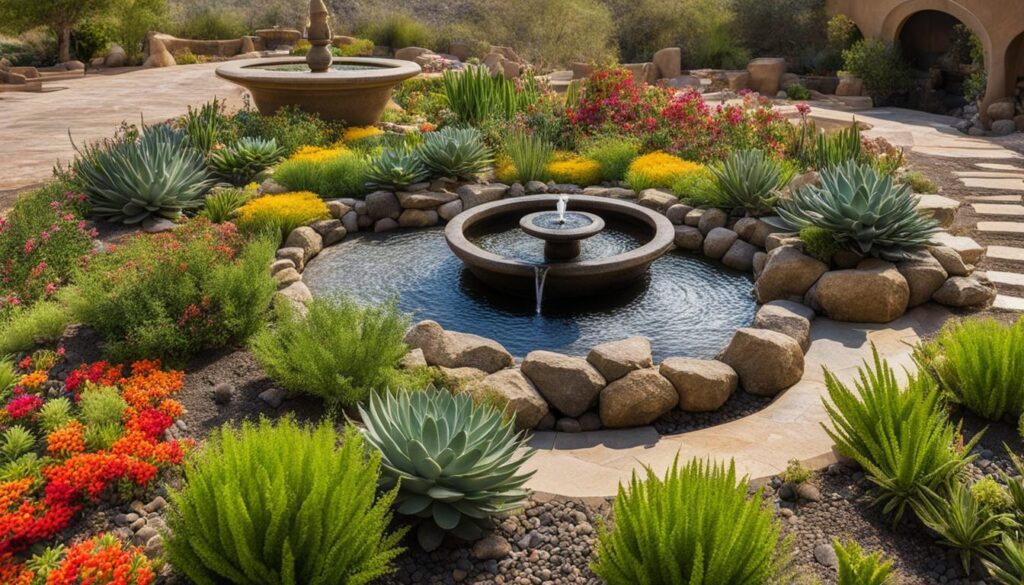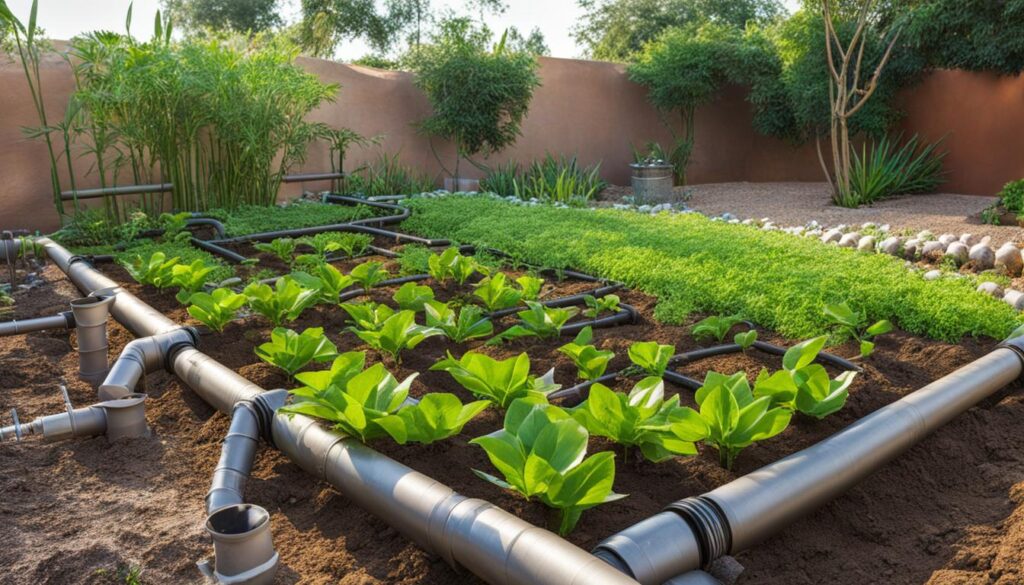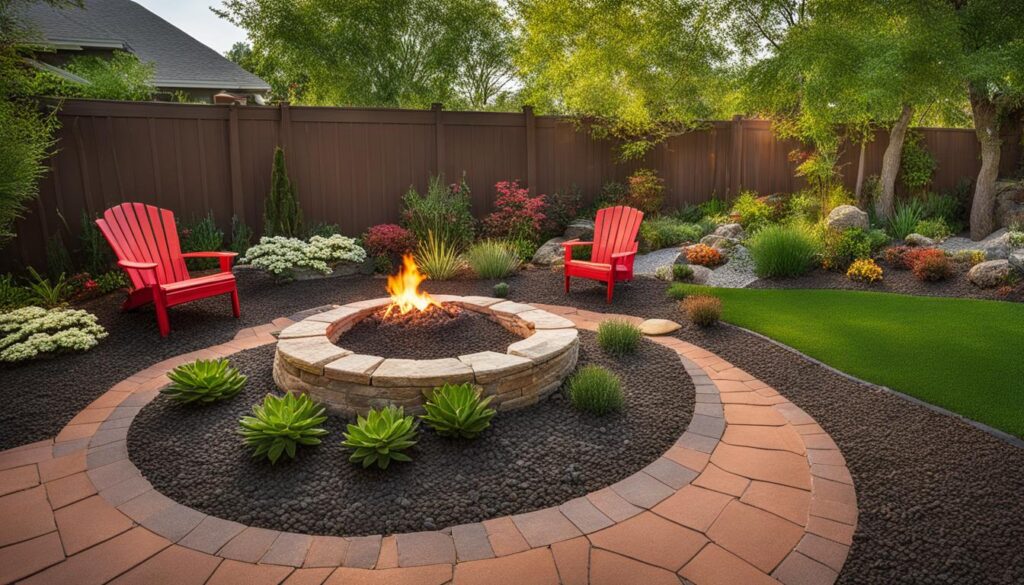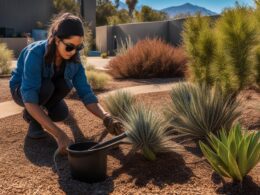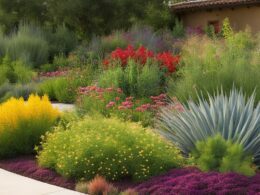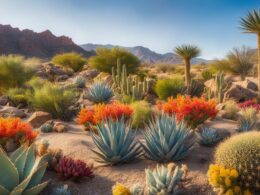Welcome to our comprehensive guide on smart gardening for water conservation. In this guide, you’ll learn valuable techniques and practices to help you create a lush and beautiful garden while conserving water. By implementing these smart gardening strategies, you can make a positive impact on water conservation in your outdoor space.
As we face increasing water scarcity and the need to protect our environment, it has become crucial to adopt water conservation practices in all aspects of our lives. Gardening is no exception. With smart gardening, you can create a sustainable and water-efficient garden that thrives while minimizing water usage.
Key Takeaways:
- Implementing smart gardening techniques can help conserve water.
- Choose water-saving plant selections for your garden.
- Optimize your irrigation practices for efficient water use.
- Incorporate fire-safe landscaping practices into your garden design.
- By practicing smart gardening, you can create a beautiful and water-efficient garden.
Gardening Inspiration
Are you ready to transform your outdoor space into a beautiful and water-efficient garden? Look no further for inspiration! Whether you are a seasoned gardener or a beginner, there are plenty of resources available to help you create a stunning landscape that conserves water.
One way to get started is by exploring landscape design templates and maintenance manuals. These free resources offer scalable, water-efficient front-yard design templates that you can tailor to your own space. With step-by-step instructions and design ideas, you’ll be able to create a garden that is both visually appealing and water-wise.
Unleash Your Creativity
If you’re looking for simple yet elegant garden designs, there are plenty of options available. Even if you consider yourself a beginner in landscaping, you can still create a stunning outdoor oasis. From minimalist designs to cottage-style gardens, there’s something for everyone.
Remember, a water-efficient garden doesn’t mean sacrificing beauty. By choosing the right plants and implementing smart design principles, you can have both a gorgeous landscape and conserve water.
For those who prefer native plants, the Calscape garden planner is a fantastic tool. It allows you to search for native plants that are perfect for your region, ensuring that your garden thrives with minimal water usage. Additionally, you can seek inspiration from eco-friendly garden tours, demo gardens, and photo galleries showcasing California native gardens.
Take the First Step
Now that you have gained some gardening inspiration, it’s time to bring your vision to life. With the right resources and guidance, creating a water-efficient garden is within your reach. Start exploring the templates, design ideas, and plant options mentioned above to embark on your journey towards a stunning and sustainable landscape.
WaterSmart Plants
Choosing the right plants for your garden plays a crucial role in water conservation. By selecting WaterSmart plants, you can create a beautiful and sustainable garden that minimizes water usage. WaterSmart plants are specifically chosen for their low water needs, making them ideal for regions with limited water resources. These plants have adapted to survive in arid conditions and require less water compared to traditional garden plants.
When selecting WaterSmart plants, it is helpful to refer to a water use classification system that categorizes plants based on their water needs. This classification system helps you identify plants that are highly water-efficient and can thrive with minimal irrigation. By incorporating these plants into your garden, you can significantly reduce water consumption without compromising the aesthetic appeal of your outdoor space.
In order to make informed plant choices, resources such as the Marin Master Gardeners and the California Native Plant Society provide valuable plant recommendations. These organizations offer extensive knowledge on native plants that are well-suited for local climates and have adapted to their natural surroundings. Native plants are a great choice for water conservation as they are already acclimated to the region’s water availability and require less supplemental irrigation.
Additionally, it is important to consider fire safety when selecting plants for your garden. Choose fire-safe plants that are less prone to combustion and can help create a fire-resistant landscape. On the other hand, avoid planting fire-prone vegetation that could contribute to the spread of wildfires. Creating a fire-safe garden in conjunction with water conservation efforts ensures a sustainable and resilient outdoor environment.
Irrigation Tips and Tools
Proper irrigation is crucial for maintaining a water-efficient garden. By following these irrigation tips and utilizing the right tools, you can ensure that your plants receive adequate water while minimizing wastage.
1. Create a Watering Schedule
Establishing a consistent watering schedule is essential for optimizing water usage in your garden. Consider the weather conditions in your area and adjust the frequency and duration of watering accordingly. A deep and infrequent watering schedule promotes healthier plant roots and reduces evaporation.
2. Embrace Drip Irrigation
“Drip irrigation is one of the most efficient methods for watering plants.”
Consider installing a drip irrigation system to deliver water directly to the roots of your plants. This method minimizes water loss through evaporation and ensures that water is delivered precisely where it’s needed. Drip lines or soaker hoses can be easily installed around your garden, providing a consistent water supply with minimal effort.
3. Upgrade Your Irrigation System
If you already have an irrigation system in place, it’s worth evaluating its efficiency. Upgrading to water-saving technologies such as weather-based controllers and soil moisture sensors can improve your system’s effectiveness. These tools help adjust watering schedules based on real-time weather data and the moisture content of the soil, ensuring that your plants receive the optimal amount of water.
By implementing these irrigation tips and utilizing the right tools, you can maximize water savings in your garden while maintaining healthy and thriving plants.
How Can Water Conservation Techniques in Smart Gardening Help in Mastering Drought-Resistant Gardening?
Water conservation techniques are essential drought-resistant gardening techniques that can greatly improve smart gardening practices. By utilizing methods such as rainwater harvesting, drip irrigation, and mulching, gardeners can effectively manage water usage and maintain healthy, drought-resistant plants even during water shortages.
Fire Safe Landscaping
Creating a water-efficient garden is not only about conserving water, but also ensuring fire safety. Incorporating fire-safe landscaping practices can help protect your property and surrounding areas. Here are some key considerations for fire-safe landscaping:
Plant Selection
Choosing the right plants is crucial for creating a fire-safe landscape. Opt for fire-resistant plants that have low flammability and are less likely to ignite. Native plants, succulents, and plants with high moisture content are generally more fire-resistant. Avoid highly flammable plants such as eucalyptus, juniper, and pine. Additionally, maintain a safe distance between trees and structures to prevent fire spread.
Defensible Space
Creating defensible space around your property is essential for minimizing fire risk. This involves creating a buffer zone by removing dead vegetation, dry leaves, and other flammable materials. Maintain a clear space of at least 30 feet around structures, and consider extending the defensible space to 100 feet in high-fire areas. Regularly trim and prune trees and shrubs to reduce fuel for potential fires.
“Fire-safe landscaping involves thoughtful plant selection and strategic design to minimize fire risk and protect your property.”
Mulch and Landscape Design
When it comes to fire-safe landscaping, the choice of mulch and landscape design can make a difference. Opt for non-flammable mulch options such as gravel, rocks, or hardwood mulch. Avoid using highly combustible materials like dry wood chips or bark mulch near structures. Consider using hardscaping features such as pathways, patios, and fire-resistant plant borders to create fire breaks and minimize fire spread.
By implementing fire-safe landscaping practices, you can reduce the risk of wildfires and protect your property. Combine these practices with water-efficient gardening techniques for a sustainable and resilient outdoor space.
Conclusion
Implementing water conservation practices through smart gardening is crucial for preserving our precious resources and creating a sustainable future. By following the tips and techniques provided in this comprehensive guide, you can make a positive impact on water conservation in your outdoor space.
Smart gardening not only helps conserve water, but it also promotes healthier plants and higher yields. By building healthy soil, selecting the right plants, mulching, watering consistently and deeply, and practicing fire-safe landscaping, you can create a lush and water-efficient garden.
Remember, every drop counts. Start your journey towards smart gardening for water conservation today! Together, we can make a difference and ensure a greener, more sustainable future for generations to come.






